Robert Knox's Blog, page 25
December 5, 2017
The Garden of Verse: The Way We Were -- At Least in Our Poems
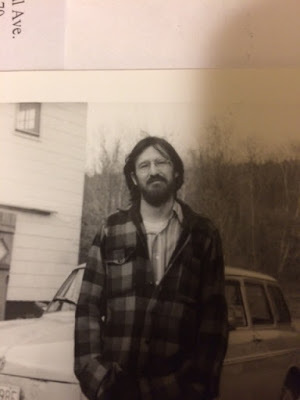
Living alone in Boston in the virtually prehistoric decade of the seventies, working lousy jobs, or no jobs, and writing poetry as a sure way to stay poor, I joined up in a “co-op” publishing venture consisting of similar types based in Cambridge. We published a slim poetry tabloid called “Dark Horse” and sold copies on the street for next to nothing. A favorite venue was the sidewalk on Huntington Avenue in front of Boston's Museum of Fine Arts -- especially on Sunday mornings, when they opened the doors for free.
I think my favorite pitch was something like "Get your news about the state of the universe." I think the price was a quarter. I think it really was.
I doubt we sold many copies. But we were pleasantly surprised when we sold some.
Anyway the monthly online poetry journal Verse-Virtual, of which I am regular contributor, asked poets to submit "early poems" for the now current December 2017 issue.
Remarkably, I put my hands on a few (I hoard paper) and three of these are currently up on Verse Virtual at http://www.verse-virtual.com/robert-c...
The first of these, posted below, "Background," is a fairly paranoid sounding piece I don't really remember writing, though the words felt familiar as I read them. I don't recall the 'brief encounter' that appears to have provoked this account, but I think I was attracted to the various different meanings of the common term "background." Something is always, in one sense or another, going on in the 'background," even if it's just a bird making a noise in a tree.
BACKGROUND
Our paths cross by accident,
and each is a little nervous.
I have a good excuse to be somewhere else,
but miss too much
and life goes to pieces.
We meet between post office and library.
I would like to postpone the conversation,
like all my chores –
but these few words
may make us allies.
Behind us a tree and a crow
are talking,
and I would really like
to know what they are saying.
The other two poems published in this December issue, "False Spring" and "November Firsts" have seasonal themes. In my memories of those days it is almost always autumn, except when it's winter.
Verse-Virtual editor Firestone Feinberg asked us also to supply a photo of ourselves from the time when our early poems were written. The photo at the top here is a black and white snapshot my wife Anne (we met around the time these poems were written) helped me find. I don't really remember it, but it must be me because I still dress that way.
Firestone himself supplied one of his own first poems, a very personal and meaningful record of meeting his wife in his first year of college. You can read that at http://www.verse-virtual.com/fireston...
Published on December 05, 2017 19:48
December 2, 2017
The Garden of History: The Real "Game of Thrones" -- England's War of the Roses and Why Empires Never Last
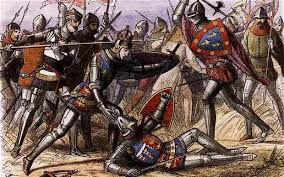
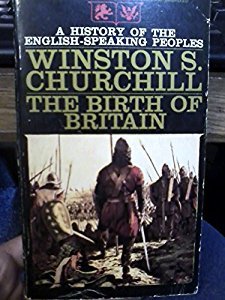 For a period of years early in the 15th century, England was on top of the Western world. After Henry V's great victory over the French at Agincourt in 1415 (during a conflict known as The Hundred Years War) and his successful dynastic marriage to Catherine, daughter of the King of France, the heroic English warrior-king became heir to the kingdom of France. He was accorded the title "King of England and Heir of France." In volume of one, "The Birth of Britain," of his three-volume "The History of the English-Speaking Peoples," Winston Churchill quotes the judgment of historian Leopold von Ranke: "It was a very extraordinary position which Henry V now occupied. The two great kingdoms, each of which by itself has earlier or later claimed to sway the world, were to remain united for ever under his successors." No prince in Europe could compare with him in territorial possessions or reputation. Churchill writes: "This was the boldest bid the Island ever made in Europe... Henry stood, and with him his country, at the summit of the world." So how long did this English domination of Europe last? Not long at all. Henry made the mistake of dying young and things fell apart immediately. Churchill describes the fate of the son of Henry V and Catherine (crowned as Henry VI) as "long to reign over impending English miseries." What happened to England during much of the remainder of 15th century still serves a prime example of the absolute rivalry that takes place between powerful dynastic families (or ruling cliques, clans, secret governments, or rival elites) whenever the prize is something close to the absolute power traditionally granted to "kings"... those who sit upon thrones. "The Game of Thrones," the title of the wildly popular TV dramatic series, is aptly chosen. During the Western world's long era of government by royal sovereigns, all of the 'houses' of Europe, big and small, engaged in a continual contest of influence, domination, and hegemony through dynastic force of arms, marriage, alliance and betrayal, pretty much all of the time. When Europe's World War I broke out, pitting England against Germany, some members of Britain's royal Windsor family expressed surprise, because Germany's Kaiser William was a cousin. Another cousin was the czar of all Russians. After the First War put an end to Russia's House of Romanov, Marxist Russia was temporarily out of the traditional dynastic game. But twenty years later the Soviet Union's Communist czar Stalin was playing footsie with Hitler. The two tyrants signed a non-aggression pact in 1939. Two years later Hitler sent his armies in a surprise attack into Russia -- a classic Game of Thrones stab in the back. Today we have the internecine rivalry in royal family in Saudi Arabia as member of the young generation strive for the throne and contenders prove how tough they are by destroying neighboring Yemen. A dynastic family belonging to a minority religious sect in Syria bombed civilian hospitals and turning half the country into ruins to hold onto power. In the world of so-called Constitutional government the dynastic Bush family led to a million deaths in an unnecessary American war in Iraq. The struggle to deny power to the Clinton dynasty ended up putting a dangerous maniac on the throne of the world's greatest power, just in time to confront the lunatic, now-nuclear dynasty of North Korea.
For a period of years early in the 15th century, England was on top of the Western world. After Henry V's great victory over the French at Agincourt in 1415 (during a conflict known as The Hundred Years War) and his successful dynastic marriage to Catherine, daughter of the King of France, the heroic English warrior-king became heir to the kingdom of France. He was accorded the title "King of England and Heir of France." In volume of one, "The Birth of Britain," of his three-volume "The History of the English-Speaking Peoples," Winston Churchill quotes the judgment of historian Leopold von Ranke: "It was a very extraordinary position which Henry V now occupied. The two great kingdoms, each of which by itself has earlier or later claimed to sway the world, were to remain united for ever under his successors." No prince in Europe could compare with him in territorial possessions or reputation. Churchill writes: "This was the boldest bid the Island ever made in Europe... Henry stood, and with him his country, at the summit of the world." So how long did this English domination of Europe last? Not long at all. Henry made the mistake of dying young and things fell apart immediately. Churchill describes the fate of the son of Henry V and Catherine (crowned as Henry VI) as "long to reign over impending English miseries." What happened to England during much of the remainder of 15th century still serves a prime example of the absolute rivalry that takes place between powerful dynastic families (or ruling cliques, clans, secret governments, or rival elites) whenever the prize is something close to the absolute power traditionally granted to "kings"... those who sit upon thrones. "The Game of Thrones," the title of the wildly popular TV dramatic series, is aptly chosen. During the Western world's long era of government by royal sovereigns, all of the 'houses' of Europe, big and small, engaged in a continual contest of influence, domination, and hegemony through dynastic force of arms, marriage, alliance and betrayal, pretty much all of the time. When Europe's World War I broke out, pitting England against Germany, some members of Britain's royal Windsor family expressed surprise, because Germany's Kaiser William was a cousin. Another cousin was the czar of all Russians. After the First War put an end to Russia's House of Romanov, Marxist Russia was temporarily out of the traditional dynastic game. But twenty years later the Soviet Union's Communist czar Stalin was playing footsie with Hitler. The two tyrants signed a non-aggression pact in 1939. Two years later Hitler sent his armies in a surprise attack into Russia -- a classic Game of Thrones stab in the back. Today we have the internecine rivalry in royal family in Saudi Arabia as member of the young generation strive for the throne and contenders prove how tough they are by destroying neighboring Yemen. A dynastic family belonging to a minority religious sect in Syria bombed civilian hospitals and turning half the country into ruins to hold onto power. In the world of so-called Constitutional government the dynastic Bush family led to a million deaths in an unnecessary American war in Iraq. The struggle to deny power to the Clinton dynasty ended up putting a dangerous maniac on the throne of the world's greatest power, just in time to confront the lunatic, now-nuclear dynasty of North Korea. For all such dangerous games, England's internecine "game of thrones," known as The War of the Roses, provides a chilling precedent. Churchill, a student of history and widely experienced practitioner in the arts of power,follows the twists turns of loyalties, pledges, promises, betrayals, back and forth victories and defeats of a two-generation struggle between contenders for the English throne between the Houses of York and Lancaster.
The root cause appears to me to lie in the nature of state or 'national' power itself. The problem is aggravated by the whole notion of hereditary succession. In fact, the first cause of England's disastrous game of thrones as Henry V's overreaching success. As Churchill puts it: "When Henry V revived the English claims to France he opened the greatest tragedy in our medieval history... The miserable, destroying century that ensued casts its black shadow upon Henry's heroic triumph." In short, though Henry won on the battlefield the 'right' to the French throne, England was never meant to govern France. Though deeply divided in the medieval centuries, France is a big country. England is an island, with its own internal divisions, facing a significant transportation barrier between its owns borders and the continent of Europe -- a piece of treacherous ocean. If the French were not content be ruled by an English king, in any prolonged ensuing conflict all the advantages of numbers, resources, and ease of supply lay on their side. What caused English hegemony over France to fall apart so quickly reveals another flaw in the "throne" system: Henry's son, who 'succeeded' to throne on his father's death, was never cut out to rule anything. Pious, humble, and unworldly, he had no interest or ability in governance. His incapacity created a power vacuum, and various English barons and ambitious 'operatives' rushed to fill it. An even deeper problem in hereditary succession was uncovered when the most powerful (and power-hungry) nobles fell to quarreling over who should take over the reins of power as their country's hold over France collapsed and their 'king' proved incompetent. Henry VI's direct descent went back to Henry IV, who deposed a ruling king (Richard II) for incompetence, favoritism, and various other pretexts... and mostly because he played "the game of thrones" better than the vainglorious Richard. However, if Henry IV's 'pretext' for legitimate accession to power is exposed as a fig leaf for a power grab, then some other high-born noble possessed a better, more legitimate claim to the throne -- all of these calculations based on the 'divine right' belief that God somehow was delivering the baby he wanted to be king to the right family. This was exactly the position taken by the current Duke of York: I should be king; I should have been king all along. If I were king, God wouldn't be punishing us. But he was not the only contender to play the play the game. The current dynastic head of the House of Lancaster threw his hat in the ring as well. York took the white rose as its heraldic symbol; Lancaster the red. Hence the War of the Roses. Churchill describes the conflict this way: "We are in the presence of the most ferocious and implacable quarrel of which there is factual record. The individual actors were bred by generations of privilege and war, into which the feudal theme had brought its peculiar sense of honor... The ups and downs of fortune were numerous and startling, the family feuds so complicated, the impact of national feeling in moments of crisis so difficult to measure." Only Shakespeare, Churchill remarks attempted to tell the story. He "telescopes" events for dramatic purposes. In his own book Churchill determines to spell the whole bloody thing out in detail. While I admire and respect the statesman-historian's grasp of the ins and outs and the who's who among a large cast of players, I look to history more for meaning than for a full recital of facts. What makes a story "heroic," as Greek tragedy taught the world millennia ago, is the 'greatness' of the protagonist, even though they die in the end. It's easy to see why the English nation preferred the dramatic concision of Shakespeare's history plays to the full recital. As the recently televised version of the three parts of "Henry VI," covering the origin and core period the dynastic wars, demonstrated, the plays still make for riveting theater. But the 'meaning' and value for the English people of the whole sequence of Shakespeare's history plays, culminating in "Richard III" when the civil strife ends with a new dynasty (the Tudors) in control, is: "Thank god, this is all behind us now. Now we have a steady hand governing the nation in the person of Queen Elizabeth. Whew! Glad those bad days are over!" Of course they're not; they never are. In Shakespeare's own times, audiences are well aware that Catholics murder Protestants in Paris, Catholic priests are hunted and burned at the stake in England, and the Emperor of Spain (the current top guy in Europe, though no Henry V) first tries unsuccessfully to marry Elizabeth and then prepares to conquer her country by launching the Spanish Armada. And in our own day, entertainments such as "Game of Thrones" and "House of Cards" grab audiences because people know deep down that the desire for power is still what rules us. And both our government, and our private sectors, daily inform us what people will do for power. Basically, anything. We watch these stories about power "games" because they show much that is true about our own societies. About us. These reflections leave me with the question of how do we get to the place -- to the way of life -- in which the mass of human beings no longer need to be ruled by those with an outsized appetite for power. When we're not simply hoping for 'stable,' 'sensible,' 'realistic' governance of our society; while fearing -- with good reason -- that the current pretender to throne is not the guy or gal to give it to us? To put it another way: When do human beings get to the place where we can to govern ourselves and live in charity with our neighbors without rulers, rules, and wielders of power? One name for this place is anarchy. A word that literally means "without rulers."
is a particularly dragged out contest of blood-letting and treachery.
Published on December 02, 2017 22:52
November 28, 2017
The Garden of the Seasons: 2017, An Outlier Autumn
 The photos to the left were taken in November of 2016, just a year ago, on our property in a residential neighborhood in Quincy. They're typical of other autumns -- not only here, but everywhere in New England.
The photos to the left were taken in November of 2016, just a year ago, on our property in a residential neighborhood in Quincy. They're typical of other autumns -- not only here, but everywhere in New England. Orange, yellow, red -- the colors of the autumn leaves. New England's claim to fame. It's New England brand name autumn foliage.
Where is it -- was it? -- this year.
We went to the Berkshires in October. The color was muted. We went back two weeks later. Some trees were bare; some were partially turned. Even then the color was spotty, hit and miss, muted even when present. The trees did not act in concert this year.
The trees were confused.
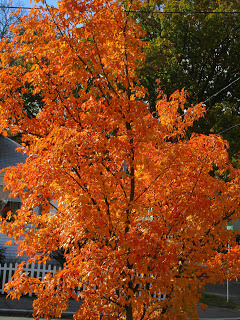 Always we turn to the weather for explanations. The weather was too wet, or not wet enough. Last year, the year these photos were taken, the summer weather was so dry it reached severe drought in most places. But still the Japanese maple, at left, turned red.
Always we turn to the weather for explanations. The weather was too wet, or not wet enough. Last year, the year these photos were taken, the summer weather was so dry it reached severe drought in most places. But still the Japanese maple, at left, turned red.The maple tree below it, a native variety planted along the street in front of our house by the city, turned orange.
The fourth photo down, our Japanese weeping cherry turned yellow, though as memory has it, some years the color was more pale yellow and uniformly sublime.
This year spring rain removed the region from drought status and the rain continued in early summer. But from mid-summer on, the rain failed. Perhaps the trees are still suffering from a long period of insufficient water.
I could not help noticing that among the 'street trees' in our city neighborhood leaves began drying up early, in late August and September. They didn't turn colors, they simply dried up, turned brown at the edges and fell into the gutters. These trees had few leaves left to change colors in the true fall of the year
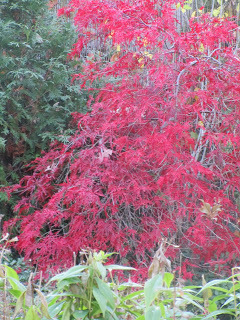 The explanation for this year's poor foliage season that I have heard mentions the absence of a proper 'signal' to the trees to stop sending chlorophyll to their leaves -- the signal is a couple of cold, below-freezing nights. When the chlorophyll pipeline is turned off, other chemicals present in leaves (such as carotin) dominate the color of the leaves as they dry out and fall off their branches.
The explanation for this year's poor foliage season that I have heard mentions the absence of a proper 'signal' to the trees to stop sending chlorophyll to their leaves -- the signal is a couple of cold, below-freezing nights. When the chlorophyll pipeline is turned off, other chemicals present in leaves (such as carotin) dominate the color of the leaves as they dry out and fall off their branches. I think the cold temperatures came with unusual abruptness in November. Now the season felt too late for the staged withdrawal of 'food' from the leaves. No elegant turning. Simply dry up and fall.
I don't have photos similar to these from the autumn of 2017. I didn't photograph the trees in their majestic autumn tints, because those colors weren't there.
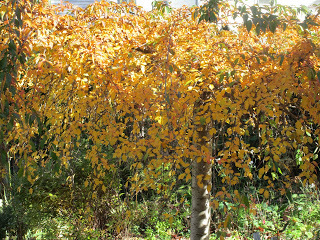 I am really hoping that is truly an outlier year for a set of conditions that robbed the trees (and the autumn-lovers) of their customary treat for the eyes.
I am really hoping that is truly an outlier year for a set of conditions that robbed the trees (and the autumn-lovers) of their customary treat for the eyes. And not a trend.
Published on November 28, 2017 22:15
November 27, 2017
The Garden of Art: Painter Frederic Church Built His House Above the Scenery That Build His Reputation
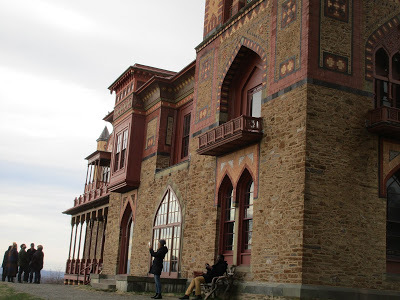
The Hudson River School of American painters owed their name, and much of their popularity, to a pioneering artist who moved to Catskill, NY in the 1820s and began sketching the landscape. A figure of the Romantic movement that included the great composers of Beethoven's era and the English poets such as Wordsworth and Shelley, Thomas Cole turned the Catskills into some combination of the unexplored Rockies and the landscape of myth, offering dramatic sweeps of wild scenery in which the works of nature loomed very large and human figures very small.
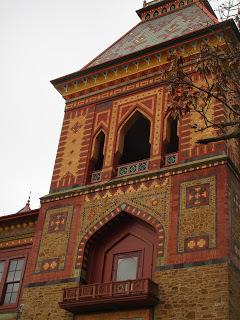 The works of Cole and a few others formed the first American school of painting that owed less to European models than to the New World -- emphasizing the size, the remoteness and wildness of a country still largely unexplored and likely to create a national character different from Europe.
The works of Cole and a few others formed the first American school of painting that owed less to European models than to the New World -- emphasizing the size, the remoteness and wildness of a country still largely unexplored and likely to create a national character different from Europe.
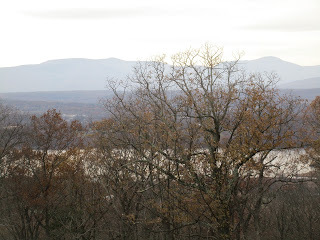 Following in Cole's footsteps the second generation of the Hudson River School took the romantic landscape approach to paintings executed all over the world. Among these artists was Connecticut-born Frederic Church. His big paintings of big subject proved popular and profitable. Influenced by the great naturalist and explorer Humboldt, along with the old masters of Europe and the new American Hudson River landscape painters, Church traveled to both the Old World and South America to portray subjects such as volcanoes in the Andes and rain forests. He uses rainbows and sunsets to add emotional color to realistic settings.
Following in Cole's footsteps the second generation of the Hudson River School took the romantic landscape approach to paintings executed all over the world. Among these artists was Connecticut-born Frederic Church. His big paintings of big subject proved popular and profitable. Influenced by the great naturalist and explorer Humboldt, along with the old masters of Europe and the new American Hudson River landscape painters, Church traveled to both the Old World and South America to portray subjects such as volcanoes in the Andes and rain forests. He uses rainbows and sunsets to add emotional color to realistic settings. Aware of the public's appetite for views of earthly wonders, he put paintings of subjects such as Niagara and icebergs on tour for the genera public, who (in the pre-film era) paid money to step inside a hall and look at them.
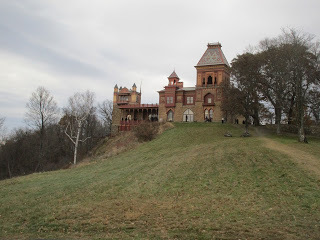
Though he moved on from New England and the Hudson Valley to painting the Andes, Church built his own home amid the spawning grounds of the Hudson River School, building a highly idiosyncratic mansion, called Olana, in the town of Hudson, NY. As the tour guide explained on our visit last weekend, after traveling widely, Church based most of the house's design on his appreciation for Persian art. The Persian arch features prominently.
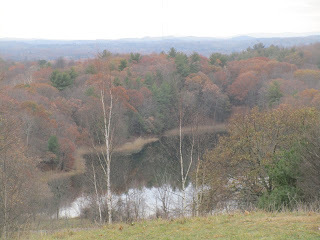 Equally impressive as the house itself is the place where he put it. As you can see in the photos the structure is sited up on a summit, with an unobstructed view of the long slope down to the Hudson River. The river divides here around a large island. While the lower Hudson was a major transportation route in the early 19th century, today the river is beautiful but largely untrafficked. From the summit you can also see the iron bridge that carries vehicular traffic across the river in two stages; first to the island and then to the other side. People come here just to walk the grounds and take in the view.
Equally impressive as the house itself is the place where he put it. As you can see in the photos the structure is sited up on a summit, with an unobstructed view of the long slope down to the Hudson River. The river divides here around a large island. While the lower Hudson was a major transportation route in the early 19th century, today the river is beautiful but largely untrafficked. From the summit you can also see the iron bridge that carries vehicular traffic across the river in two stages; first to the island and then to the other side. People come here just to walk the grounds and take in the view. 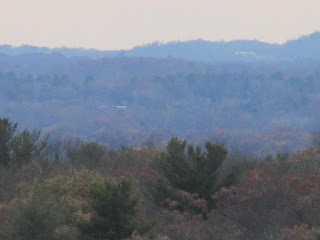 The mansion, Olana, houses the Churches' art collection, gathered over several continents. He has sculptural pieces from India, likely copies of ancient pieces. He has a room with its walls tightly packed with his "old masters'' collection, including many oils that have gone dark over time. He has table full of tightly woven Mexican hats.
The mansion, Olana, houses the Churches' art collection, gathered over several continents. He has sculptural pieces from India, likely copies of ancient pieces. He has a room with its walls tightly packed with his "old masters'' collection, including many oils that have gone dark over time. He has table full of tightly woven Mexican hats. Another suite of rooms embraces the Middle-Eastern motifs in design and furnishings that he saw in his travels.
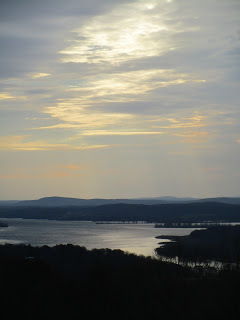 Only a few of Church's own paintings are exhibited in the house; and those came back to him after being sold. The painter could afford to travel widely and build a house like this because in the first decades of his career his art was popular, sold well, and his reputation drew commissions.
Only a few of Church's own paintings are exhibited in the house; and those came back to him after being sold. The painter could afford to travel widely and build a house like this because in the first decades of his career his art was popular, sold well, and his reputation drew commissions. Church worked closely with prominent architect Calvert Vaux on on the house's individualistic design. Here's how the Olana Historic Site website describes the architecture:
Stylistically, the building is a villa with asymmetrical massing of towers and block masonry punctuated by fanciful windows and porches. The irregular silhouette of the exterior contrasts with the more regular rhythm of rooms arranged around a central hall. On the exterior, Middle Eastern motifs are carried out in colored brick, wood, slate, ceramic tile and especially stenciling. Together, the various motifs and themes create a unique artistic unity, one that is difficult to categorize.[http://www.olana.org/]
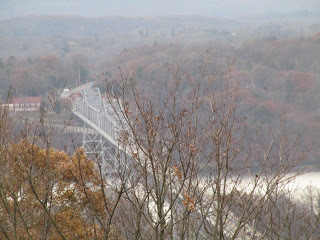
After the family moved into the house (1872), Church continued to work on unfinished rooms and make improvements for the next 20 years.
A visiting to Olana is well worth the trouble. Between what's inside the house and what's outside it, there's plenty of beauty to look at.
Published on November 27, 2017 20:37
November 20, 2017
November Poems. A curse, a praise song, harmony, belief, time's slow investments, and some happy-sad payoffs fall like autumn leaves at the turn of the year
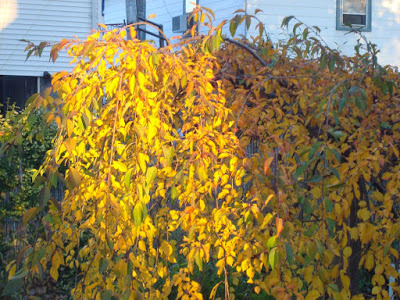 November's Verse-Virtual, the online poetry journal, includes some very good poems on very tough subjects. A stupendous poem by Dick Allen on a subject that continues to haunt American life in these politically disordered times, "A Curse" seeks to blast the names of our country's homegrown mass murderers into negative space. The message rips me open, but I love the word music in this poem's construction. For instance, all those 'r' sounds, grr-grring, in the final stanza:
November's Verse-Virtual, the online poetry journal, includes some very good poems on very tough subjects. A stupendous poem by Dick Allen on a subject that continues to haunt American life in these politically disordered times, "A Curse" seeks to blast the names of our country's homegrown mass murderers into negative space. The message rips me open, but I love the word music in this poem's construction. For instance, all those 'r' sounds, grr-grring, in the final stanza:"For they are dung and spit and gelatin and scar,
The dribble soaked into a chewed cigar,
Old knots in dirty hair, crepuscular.
We want to hear their names no more."
Joan Colby must truly know the ins and outs of every useful occupation employed to keep our everyday world running. It's enough to make the rest of us feel thoughtless and incurious. Her "Saint Roofer" pounds nails "to secure our lives."
"As the hailstones beat
A severe harmony retelling
All that we have missed."
I'm convinced. Thanks heaven for roofs that keep the winter out of our indoor lives and the people who keep them tight. We hear the music of the city in "Saint Busker":
"Sad operetta of the unemployed
Strumming an old song for coins
Thrown carelessly in a bucket."Anyone who's ever waited in a subway station appreciates the apt phrase "sad operetta."Of the "Saint Roadbuilder," whose place of employment I pass with never a grateful thought for the blessing of passable roads, here is the poet's depiction:
"Aloof in the cage working the levers
Of a juggernaut as we pray
For safe passage."Amen.
Donna Hilbert's "What to Believe" melds Sunday, church, family, pop culture, childhood nostalgia, and darker moments into a kind of prayer, elegy and statement of self-assertion, part affirmation and part accusation. "I did love Sunday mornings, but needed more than love.
I lacked the knack for easy pleasure," the poem confides.
Be sure to read the rest.
Tricia Knoll's poem teaches me a new word, "Rhytides" :
"My script is rhytides, wrinkles
that accrue with interest after slow investments."
It's the measurement of time in our skin. The indexing. Many of us will identify with the spirit of this poem.
The sad, lovely music of Kate Sontag's "Black Knot Blues," a poem about the transformation of a tree into a walking stick is both poignant and entrancing:
"we croon, prune, spray in repetitions thickas jam. But galled limbs, trunk split then sold,
our plum tree becomes a walking stick,"
It took me a while to recall that the term for a poem built of stanzas like these, with repeating third-line refrains, is villanelle -- even though Verse-Virtual made it a theme a while back. Whatever we call it, this is one of those true poems about time that poets have to keep writing because we can't wish it way it way, forget it, or do anything about it except to make something artful. Like a poem. This one is a beautiful lament for time's victim; but also a 'stick' that will help keep us on our feet.
See the rest of these poems, and more, in http://www.verse-virtual.com/poems-an...
I continue to be happily amazed at how many marvelous poems Firestone and Verse-Virtual's contributors wrap up in a lovely package each month.
Published on November 20, 2017 09:20
November 13, 2017
The Garden of History: The Origin of Veterans Day and the End of War
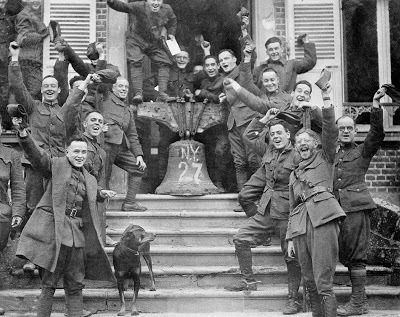 Veterans Day is celebrated on the date of the 1918 "armistice," the agreement that ended the First World War I on Nov. 11.
Veterans Day is celebrated on the date of the 1918 "armistice," the agreement that ended the First World War I on Nov. 11. After four years of a devastating modern mechanized gunnery and heavy armaments style of warfare unlike anything the world had seen before, none of the combatants had anything to celebrate.
What was World War I about? Nothing that justified destroying lives by the thousands; and nothing that was resolved by the enormity of four years of death and destruction.
A rising European power, Germany wanted its “day in the sun.” France wanted to regain territory lost to Germany in a previous war. Russia wanted absorb more of the declining Ottoman Empire into its own Czarist oppression. Turkey was talked into allying with Germany to protect that empire from Russian aggression. England, afraid of a threat from rising German power, a country that insisted on building a navy that would some day rival its own – our word for this today is “arms race” – allied with France to maintain what it saw as a favorable balance of power. Austria, another fading empire, allied with imperial Germany also to seek protection from Russia and that country's pan-Slavic agitation of orthodox Christian minorities within the Austro-Hungarian empire. Italy, nursing grievances against Austria, joined the England-France team.
Significant segments of the population in the various warring parties believed that a war would get them what they wanted, at minimal cost – and quickly. Absolutely everybody was wrong.
What war brings is a sharp reduction of population, particularly in the youthful demographic, loss of wealth and productive capacity, setbacks in social progress, and renewed cries for vengeance.
Among the costs of the world war that began in August of 1914, France lost 300,000 men killed in the first five months. Major battles continued to reckon the casualties in the hundreds of thousands.
European armies, eventually joined by American forces exactly 100 years ago, laid waste to one another along trench lines and fortresses until a weakened and worn Germany sued for peace and an armistice was declared on Nov. 11, 1918. Historian Alistair Horne writes in his book "La Belle France":
When the celebrants of Armistice Day in Paris paused to consider the cost in the grey light of day, they counted 1.4 million Frenchmen killed in action, the largest proportion of any of the combatant nations; On top of that came the civilian dead and the victims of the flu epidemic that took 40 million lives across the globe... Thus it was hardly surprising that the post-Armistice Day cry across the breath of France was "Plus jamais ca! [Never again!]"
That message, however, has been lost sight of again and again as nation states and their governments, even the so-called democratic ones, continue to use military force in a vain attempt to solve conflicts with other nation states.
What is the enduring meaning of Veterans Day, a day that was created to commemorate the ending of the "Great War"? Here it is in the words of Roger Ehrlich, a member of Veterans For Peace and "co-creator of the Swords To Ploughshares Memorial Belltower" in Raleigh, N.C.:
Ninety-nine years ago, at the 11th hour of the 11th day of the 11th month, bells tolled around the world, and people poured into public squares to celebrate the end of what was called The War to End All Wars. For many years, Armistice Day was observed as a day to remember the dead of WWI and rededicate ourselves to never letting it happen again.
Ehrlich said the Memorial Belltower in Raleigh provides a place to memorialize the loss of loved ones, fellow countrymen, and even to recognize the losses of wartime enemies: "Perhaps the most radical but most healing aspect of our Belltower is the inclusion of inscriptions memorializing the suffering of our ‘enemies’... This Armistice Day, let us – at long last – beat our swords into plowshares."
The Veterans For Peace national organization took the opportunity of Veterans Day this year to urge Americans to sign the People’s Peace Treaty with North Korea. Here's what these veterans are saying: Alarmed by the threat of a nuclear war between the U.S. and North Korea, Veterans For Peace and other concerned U.S. peace groups have come together to send an open message to Washington and Pyongyang that we are strongly opposed to any resumption of the horrific Korean War. What we want is a peace treaty to finally end the lingering Korean War!
Inspired by the Vietnam-era People’s Peace Treaty, we have initiated a People’s Peace Treaty with North Korea, to raise awareness about the past U.S. policy toward North Korea, and to send a clear message that we, the people of the U.S., do not want another war with North Korea.
[https://www.veteransforpeace.org/]
Published on November 13, 2017 21:51
November 7, 2017
Garden of the Seasons: Transition Time in Marsh and Forest
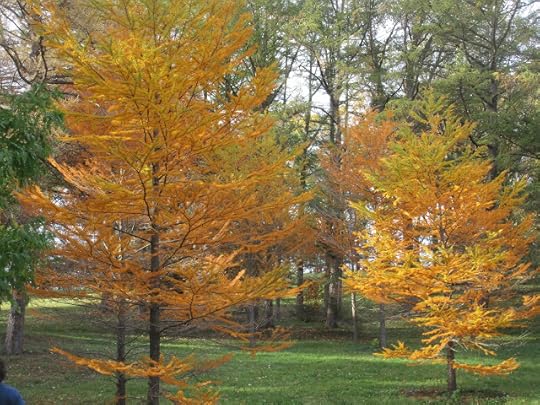
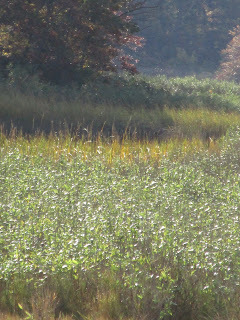
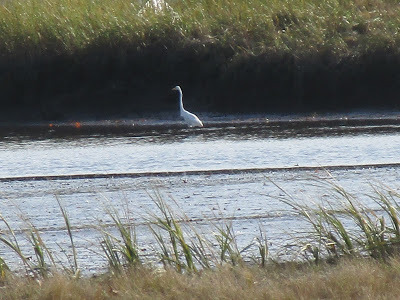 Autumn color is still all around us. This year the season is rolling through without a peak. The experts tell us October needs a couple of cold nights to trigger the chemical changes in trees that block chlorophyll from reaching the leaves, allowing those other chemicals in leaves to dominate, turning them yellow gold, orange, red, bronze, and the ruddy-maroon brown of late season oaks... until the leaves dry out and eventually fall. Without a clear signal from the cold weather -- bam! bam! Did you feel how cold it got last night? -- the trees are pretty much on a go it alone basis. They will 'turn' when they do, each in its own season. On our block our street-side maple turned bright orange weeks ago. It was the only tree on the street with strong color. Those orange leaves are on the ground now, quickly losing their death-mask of color. And we've already turned the clocks back, and you still can't really tell it's autumn yet from looking at the trees.
Autumn color is still all around us. This year the season is rolling through without a peak. The experts tell us October needs a couple of cold nights to trigger the chemical changes in trees that block chlorophyll from reaching the leaves, allowing those other chemicals in leaves to dominate, turning them yellow gold, orange, red, bronze, and the ruddy-maroon brown of late season oaks... until the leaves dry out and eventually fall. Without a clear signal from the cold weather -- bam! bam! Did you feel how cold it got last night? -- the trees are pretty much on a go it alone basis. They will 'turn' when they do, each in its own season. On our block our street-side maple turned bright orange weeks ago. It was the only tree on the street with strong color. Those orange leaves are on the ground now, quickly losing their death-mask of color. And we've already turned the clocks back, and you still can't really tell it's autumn yet from looking at the trees.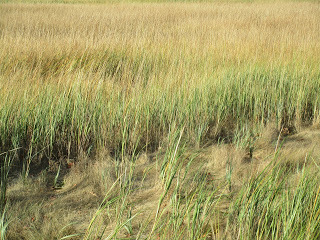 November is often the month with the most autumn color around here, but this fall the turn will arrive later and pass slower than ever before.
November is often the month with the most autumn color around here, but this fall the turn will arrive later and pass slower than ever before. 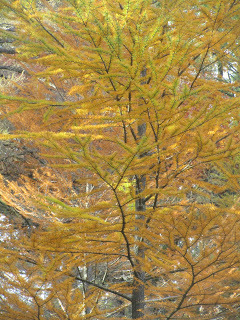 Frankly, the high-end market for trees in the Boston area, the Arnold Arboretum, exhibits much the same pattern. The color was muted when we visited there, the city's premium showplace and wonderland for trees, last weekend. Two examples of interesting color are pictured here. The top photo is the larch. The species is rare among conifers in practicing the behavior of the other kind of trees -- the deciduous -- in losing its leaves each year. The larch, a member of the genus Larix of the pine family Pinaceae (having just looked this up to confirm my memory) has needles that turn orange (as seen in the top photo and the fifth one down) in autumn before falling.
Frankly, the high-end market for trees in the Boston area, the Arnold Arboretum, exhibits much the same pattern. The color was muted when we visited there, the city's premium showplace and wonderland for trees, last weekend. Two examples of interesting color are pictured here. The top photo is the larch. The species is rare among conifers in practicing the behavior of the other kind of trees -- the deciduous -- in losing its leaves each year. The larch, a member of the genus Larix of the pine family Pinaceae (having just looked this up to confirm my memory) has needles that turn orange (as seen in the top photo and the fifth one down) in autumn before falling.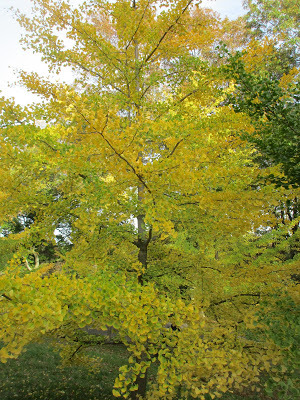 The second example, also exhibiting leaves of a wonderful yellowish shade, this one a kind of buttery tint, is the gingko (Ginkgo biloba, a family of one). A native of China, the tree's leaves exhibit a sculpted fan-like shape. Pale green all summer, they turn into golden scales in the fall (bottom two photos).
The second example, also exhibiting leaves of a wonderful yellowish shade, this one a kind of buttery tint, is the gingko (Ginkgo biloba, a family of one). A native of China, the tree's leaves exhibit a sculpted fan-like shape. Pale green all summer, they turn into golden scales in the fall (bottom two photos). Autumn color also turns a golden, yellowish, brownish, copperish range of tints in the salt marsh along the shore where we live in Quincy, Massachusetts. I've included here a couple of shots of the spartina grass that colonizes all of the marshland except for the more permanent channels of salt water regularly replenished by the tides. If there's any even occasionally dry sandy soil in the marsh, the spartina grows there. This time of year it turns golden or golden-brown like a field of nourishing, delightful grain that will feed us all winter. Of course it isn't, but these color tones dazzle my eyes.
And finally, discovered in the marsh a long-legged white wading bird, the Great Egret. Just because it's there.
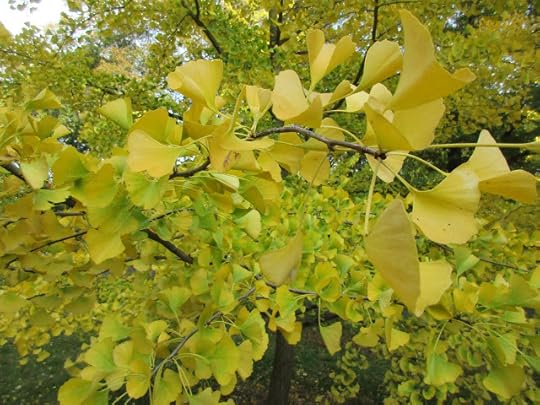
Published on November 07, 2017 15:22
November 2, 2017
The Garden of Verse: My Poem on the "Symbiotic Community" of the Forest, after Reading "The Hidden Life of Trees"
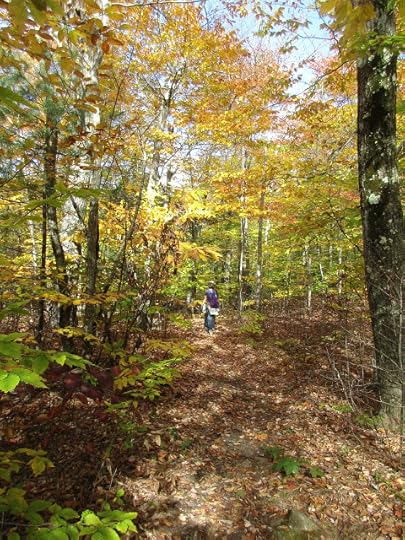
When is the wrong time to think about trees? I don't know, but this is clearly one of the right times.
I wrote the poem below after reading The Hidden Life of Trees,by German forester and author Peter Wohlleben, which I'm being told is an international best-seller.
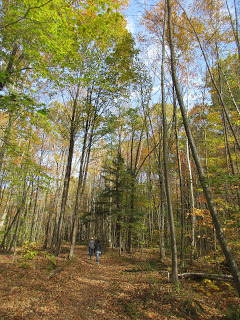 I was taken by his phrasing. Not only are trees social beings they are connected with other species such as fungi in a "symbiotic community" of the wild forest. They live life in "the slow lane," Wohlleben tells us. Very young trees, a kindergarten of saplings, are cared by "their mothers" who feed them nutrients through a fungal network. I wanted to get some of the poetic quality of the forester's vocabulary, or imagery, into this poem. Stimulated by the author's way of seeing the woodland as a social network and trees as planful elders looking out for their own best interests by looking out for those of all their 'neighbors,' I tried to imagine life as the trees -- the people of the forest -- experience it.
I was taken by his phrasing. Not only are trees social beings they are connected with other species such as fungi in a "symbiotic community" of the wild forest. They live life in "the slow lane," Wohlleben tells us. Very young trees, a kindergarten of saplings, are cared by "their mothers" who feed them nutrients through a fungal network. I wanted to get some of the poetic quality of the forester's vocabulary, or imagery, into this poem. Stimulated by the author's way of seeing the woodland as a social network and trees as planful elders looking out for their own best interests by looking out for those of all their 'neighbors,' I tried to imagine life as the trees -- the people of the forest -- experience it.The 'Symbiotic Community' of the Forest
They know us from the roots
They talk about the weather,
exchanging chemical news
When their fungal fibers clasp hands in the morning
The sky is theirs, to do with as they wish
Appendages finger the air
and take hold of aerie elements
invisible to other eyes,
their thousands of greenie digits
flying in place through the winds of the world
Stalwart defenders of the right to grow
nerves probing deep in the hidden land of subsoil
amid glacial memories of the icemen
who walked the earth
the dominators, rulers of the shape of things
until we came along
Tendrils flipping through the library of time,
they know us from the taste of earth
the rain with its acid tinge
the smoke of the ubiquitous compounds
of the ceaseless back-and-forth
the dry rain of transport
They know us from the leaf,
the air, the color of the lights
the bent, frazzled music of our passing,
the foot-dragging alterations of our artificial suns,
our many, many star-chambers fixed on imitation trees
made of their dead,
shiny heads upon their stakes
their flesh flensed and wound about the quadrants of our dwellings,
great woody bandages defending the empty air inside
They know us by their buried nerves
streaming through arterial currents
the tidings of the under-earth
They know our flavor, and our angry moods
Our burning love to be somewhere else
Our burials, our hidden wastes
Our smokes, and floods of mineral leaks,
our fences and our wars
They know, and still they turn
their flesh-fed banners to the sky
Lots more poems in the November 2017 issue of Verse-Virtual. http://www.verse-virtual.com/poems-an...
Published on November 02, 2017 21:45
October 31, 2017
The Garden of the Seasons: The Time of Year When Life Meets Death and Horrors Prowl
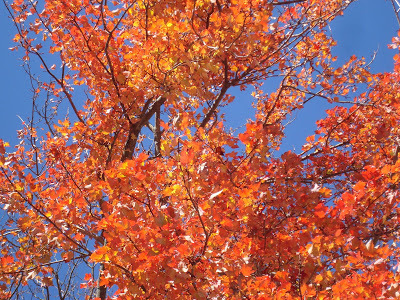
It's a scary time of year. Filled with strange omens, early sunsets, sudden changes of weather, wandering beggars pounding at your door, and the abidingly glorious spectacle of the autumn foliage. We should all look this good when we fall to earth.What we learned about this season last year was that Halloween comes very close to Election Day, and sometimes the two exchange places. Halloween is clearly the lighter-hearted of the now widely observed autumn holidays. It’s on Election Day that ghosts, monsters, and spirits of the dead walk the land. Some of us find any excuse at all to celebrate in autumn. In our household we have favorite pieces of music or albums that evoke the season’s spirit. We associate the beauty of Fall with the music of Windham Hill piano master George Winston, especially his albums “Autumn” and “Forest.” I also find the music of Celtic harp virtuoso and musicologist Aine Minogue particularly soulful when the sun declines, the shadows lengthen and, according to ancient belief, the barrier between the material world and the world of the spirit thins.
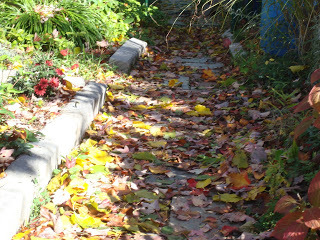 The popular origin theory for Halloween is the Celtic festival Samhain. Though typically associated with Ireland today, the Celts were once the dominant culture all over western Europe. When Caesar was conquering the Gauls in France – those were Celts. As were the Britons.
The popular origin theory for Halloween is the Celtic festival Samhain. Though typically associated with Ireland today, the Celts were once the dominant culture all over western Europe. When Caesar was conquering the Gauls in France – those were Celts. As were the Britons.
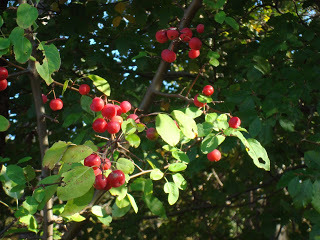 Later, when the people of these lands were converted to Christianity, the Roman church took control of their calendar. The Christian stamp was laid on top of a seasonal parade of feast days that were still rich with the old traditions. The Celtic autumn festival Samhain, one of the seasonal ‘fire festivals,’ involved lighting bonfires and – here’s the clincher – wearing costumes to ward off ghosts.
Later, when the people of these lands were converted to Christianity, the Roman church took control of their calendar. The Christian stamp was laid on top of a seasonal parade of feast days that were still rich with the old traditions. The Celtic autumn festival Samhain, one of the seasonal ‘fire festivals,’ involved lighting bonfires and – here’s the clincher – wearing costumes to ward off ghosts.
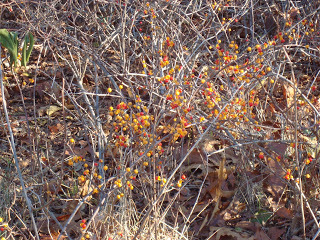 The Christian holy day celebrated at this time is All Saints Day. Many saints have their own feast days, so all the others (lest they feel neglected) are all bundled into All Saints Day, celebrated on Nov. 1. Saints are “hallowed,” that is, sacred figures. So All Hallows Eve became the name for the day before All Saints Day, a day when folks had the fun of lighting fires, costuming and otherwise japing around. They would have plenty of time to be good on the day after. Here’s what Aine Minogue’s album “Between the Worlds” says about the Celtic festival of Samhaim: Samhain was the feast that marked the end of the "light half" of the year and the beginning of the "dark half." The light half was that of the people, the dark half belonged to the earth, the cycle of time being expressed in the basic duality of darkness and light. Samhain, or Halloween as it has come to be known, was actually New Year's Eve in the Celtic calendar. For the Celts, the dark always preceded the light, and day began at dusk, not dawn.”
The Christian holy day celebrated at this time is All Saints Day. Many saints have their own feast days, so all the others (lest they feel neglected) are all bundled into All Saints Day, celebrated on Nov. 1. Saints are “hallowed,” that is, sacred figures. So All Hallows Eve became the name for the day before All Saints Day, a day when folks had the fun of lighting fires, costuming and otherwise japing around. They would have plenty of time to be good on the day after. Here’s what Aine Minogue’s album “Between the Worlds” says about the Celtic festival of Samhaim: Samhain was the feast that marked the end of the "light half" of the year and the beginning of the "dark half." The light half was that of the people, the dark half belonged to the earth, the cycle of time being expressed in the basic duality of darkness and light. Samhain, or Halloween as it has come to be known, was actually New Year's Eve in the Celtic calendar. For the Celts, the dark always preceded the light, and day began at dusk, not dawn.” Samhain, this borderland of seasons, between light and dark, also bridged the dualities of life and death:
This day marked the end of summer and the harvest and the beginning of the dark, cold winter, a time of year that was often associated with human death. Celts believed that on the night before the new year, the boundary between the worlds of the living and the dead became blurred. On the night of October 31 they celebrated Samhain, when it was believed that the ghosts of the dead returned to earth.”
Aine’s research also extends to the origin of trick-or-treating: “The children's tradition that otherworldly creatures come to life on Halloween has its origins in the ancient feast of Samhain." However, she adds, "the Celts' main concern with the other world was to receive wisdom from their ancestors.” Samhain, a time of borders and passages between this world and the next, between growing season and fallow season, was also “a time for solitary introspection and reflection,” she writes. “The custom of dressing up in costume began back then. It was acceptable to stretch the boundaries by assuming a different identity to welcome the supernatural.”This year I think I will dress up as myself. We thought about carving a pumpkin with the features of a raving lunatic and plastering a hank of straw on top to suggest the image of the monster who slipped into our world this time of year one year ago.In the end, however, we decided not to tempt fate a second time. We turned on the porch light and handed out treats. I wore the mask of a contented soul and munched on leftover candy to sweeten my disposition.
Here’s a link to the song “Fyvie Castle” from Aine Minogue's album “Between the Worlds.”https://www.minogue.com/track/739271/fyvie-castle?feature_id=166738
Published on October 31, 2017 22:11
October 25, 2017
The Garden of the Seasons: Still Moments in the Shakers' Woods
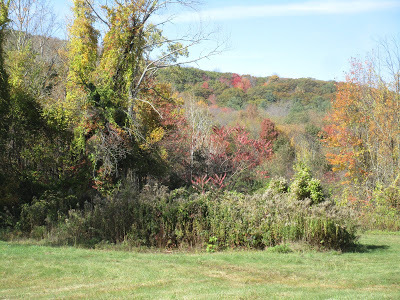
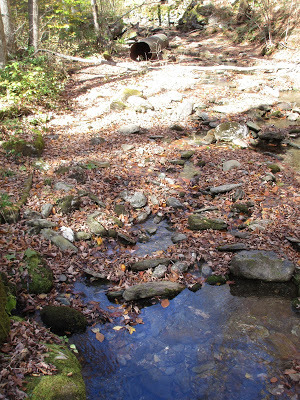 Late October. Some of the trees are bare. Some shedding leaves as we watch. In ones or twos, or a dozen when a breeze blows, the yellowing leaves float down, breeze sensitive.
Late October. Some of the trees are bare. Some shedding leaves as we watch. In ones or twos, or a dozen when a breeze blows, the yellowing leaves float down, breeze sensitive.
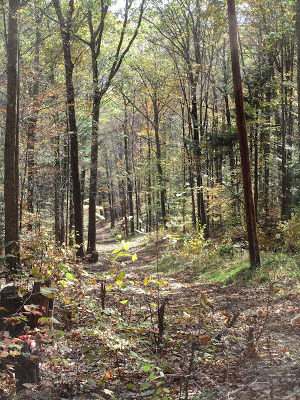
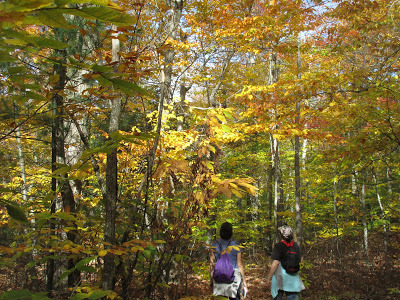
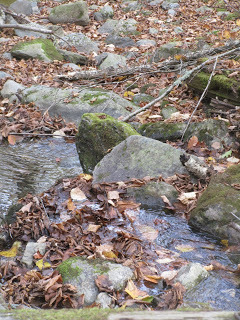 Any motion, any gesture cutting the air pressure column causes the descending nearly weightless entity of a falling leaf to change direction. That's why you can't catch them.
Any motion, any gesture cutting the air pressure column causes the descending nearly weightless entity of a falling leaf to change direction. That's why you can't catch them.  The first thing you notice on mild, calm October days such as those we had last weekend, even before the falling leaves, is the silence.
The first thing you notice on mild, calm October days such as those we had last weekend, even before the falling leaves, is the silence. We wanted that silence. We wanted to enter and be swallowed up by the presence of trees, those speechless companions, loosing the superfluities of the growing season, those solar-gathering leaves, to better save their energies for the cold, dormant time ahead.
We found those quiet woods on the property of Hancock Shaker Village, a site a few miles away from the city of Pittsfield in northern Berkshire County.
The village itself was the home of a once highly successful community established in the late 18th century by a religious movement begun earlier in England by the "charismatic" prophet Anne Lee. Today the village is a museum, after the Shakers closed it in 1960. In its early 19th century heyday the Shakers provided a refuge for women, and men, who needed a home, a means of support, and perhaps an alternative to conventional life. It also provided a home for those whose need was even more acute -- orphaned children, in an era before government care for orphans. We hiked in Hancock Shakers' woods up to the summit called Shaker Mountain now, though the Shakers themselves had given it the Biblical name of Mount Sinai.
The Sun was out and the trees sluiced its light, yellow and orange foliage shining in its glow. Alternating strips of shadow and slight carpeting the path before us and the forest floor. Trees going about their business. Getting along with rocks. Providing some nourishment for the woodland creatures who feed on their seeds. Silently cheering on the few still-running streams that bring fresh water to wild places.
We followed the woodland stream the Shakers had fitted with piping to provide themselves with clean water. And dammed with flat stone buttresses to power a mill wheel to grind their grain.
The defining way of life in Shaker villages was celibacy. This was the fulcrum of Mother Ann Lee's founding vision: abstaining from sex was the path you took to get into heaven. Pacifism and gender equality came into play as well. Men and women lived separately, but but otherwise communally at the Shaker village and lived off the produce of their farm. The Hancock property was essentially a dairy farm. The selling of garden seeds was a big business too. And at some point, of course, the wonderful, defining legacy of Shaker furniture came into play. The plain style of their handsome furniture is evident in Hancock Village's architecture as well. The movement began to run out of steam in the 1840s, and folks left New England farming communities to move west or find industrial jobs in cities. I think also the difficulty of replenishing population without making your own next generation told on the movement as well.
Before today's museum village, it was the Shakers themselves who looked after these woods, this hillside, this summit. On the summit of Shaker Mountain, the Hancock Shakers, following a directive from their movement's leaders, cleared a regular quadrant for a burial place. That squared-off clearing has been preserved. The weeds and brush cut back.
We walked a narrow path through it, preserving its silence, feeling its peace.
Published on October 25, 2017 20:30



